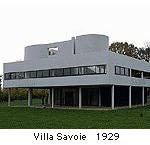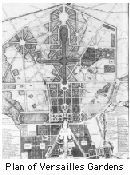|
Le Corbusier, Charles Eduard 1887-1965 Leading theorist and builder of 20th century architecture and city planning.
Born in La Chaux-de-Fonds, Switzerland, Corbusier spent most of his life in Paris. His designs combine the functionalism of the modern movement with a bold, sculptural expressionism. He belonged to the first generation of the International school of architecture and was their most able propagandist in his numerous writings. An example of his functionalism is the unité d'habitation in Marseille - a vertical community of 18 floors. The 1,800 inhabitants are housed in 23 types of split-level apartments. Common services include two "streets" inside the building, with shops and, on the roof, a kindergarten, a gymnasium, and an open-air theatre. The apartments are conceived as individual "villas" stacked in the concrete frame like bottles in a rack. In 1950 Le Corbusier was commissioned to design the city plan for a new capital, Chandigarh, of the Indian state of Punjab which had been divided between Pakistan and India. A more sculptural example is the Ronchamp Chapel - a pilgrimage church for both exterior and interior services.
www link :
Le Notre followed his father as head gardener at the Jardin des Tuilleries in Paris. The parks which Le Notre designed at Fontainbleau and Versailles are the supreme examples of the French seventeenth century style of garden design. Le Notre also projected the central axis of the Tuileries, which became the grand axis of Paris running to the Arc de Triomphe. His baroque style of garden design became widely influential in Europe and every prince dreamed of owning a garden which would 'outshine Versailles'
www link :
Born in Paris Lescot became one of the greatest architects of France. For the decorations of his buildings he associated himself with the sculptor, Trebatti, a pupil of Michelangelo, and the plastic artist Goujon.
King Francis I appointed him architect of the Louvre in 1546. For remodelling the old bastions of the fortress into a residence three sides of a square court were to be enclosed by living apartments of royal splendour while the fourth or east side was to open with an arcade. Corner pavilions, remarkable for commanding height and adorned by pillars and statues, replaced the medieval towers.
www link :
|


